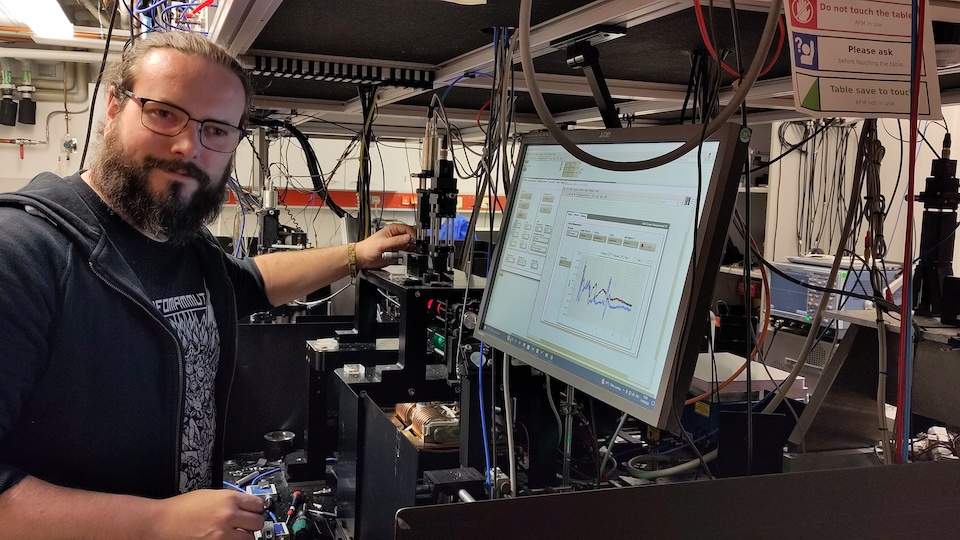11. Oct 2022
Physicists generate new nanoscale spin waves
Here you find the doctoral student’s profile of Rouven Dreyer. He published results of his doctoral studies at Martin Luther University Halle-Wittenberg and shared the research more widely with a press release.
About the author:

- Rouven Dreyer ORCHID, ResearchGate
- Research area(s): Magnonics and Spintronics
- Optics Group, Institut of Physics (link), MLU
Field(s) of expertise during doctoral studies:
- Linear and non-linear magnetization dynamics
- Magneto-optical Kerr microscopy with arbitrary frequency resolution
Curriculum Vitae
- Continuing at MLU as a Post-Doc
- Doctoral studies in the Optics Group of Prof. Dr. Georg Woltersdorf at MLU
- Master of Science at the Laboratory for quantum and nano-engineering (LNQE) in Hannover in 2014
- Bachelor of Science at the Leibniz University Hannover (LUH) in 2011
Challenges, rewards and contribution
Q: What was your most important contribution to the publication?
A: During my first years as a PhD student I developed the novel super-Nyquist-sampling microscopy technique (SNS-MOKE). After establishing this technique as a very reliable technique to image magnonic effects we aimed to reach out for non-linear effects. With this technique it was surprisingly easy to observe the obtained non-linear spin-wave phenomena which were so far only theoretically predicted. In this publication I performed all the measurements, performed some of the micromagnetic simulations and was involved in the writing and reviewing process of the manuscript.
Q: What was challenging and what was a rewarding moment during your work presented in the publication?
A: One of the most rewarding moments was the first phase-stable observation of these non-linear spin waves and the nearly perfect matching of their wavelength with theoretical predictions. Most challenging was to get an idea why these spin waves only tend to be stable under very specific experimental conditions and which approaches might allow to stabilize them. And of course, it was quite challenging but rewarding at the same time to convince the rather critical referees during the review process that our results experimentally show a new effect.
Significance of publication
Strong alternating magnetic fields can be used to generate a new type of spin wave that was previously just theoretically predicted. This was achieved for the first time by a team of physicists from Martin Luther University Halle-Wittenberg (MLU). They report and provide the first microscopic images of these spin waves.
From press release no. 103/2022 of September 15, 2022
Related publication
R. Dreyer, A.F. Schäffer, H. G. Bauer, N. Liebing, J. Berakdar and G. Woltersdorf
Imaging and phase-locking of non-linear spin waves.
Nature Communications 13, 4939 (2022)
doi: 10.1038/s41467-022-32224-0
About this profile
Doctoral students contribute significantly to publications highlighted by the MLU press office in many cases. These early stage researchers and their work in connection with the publication are in the focus of these profiles. Please check further doctoral student’s profiles.
Are you interested in science communication and have an interesting story to tell? Get in touch with MLU’s press office at